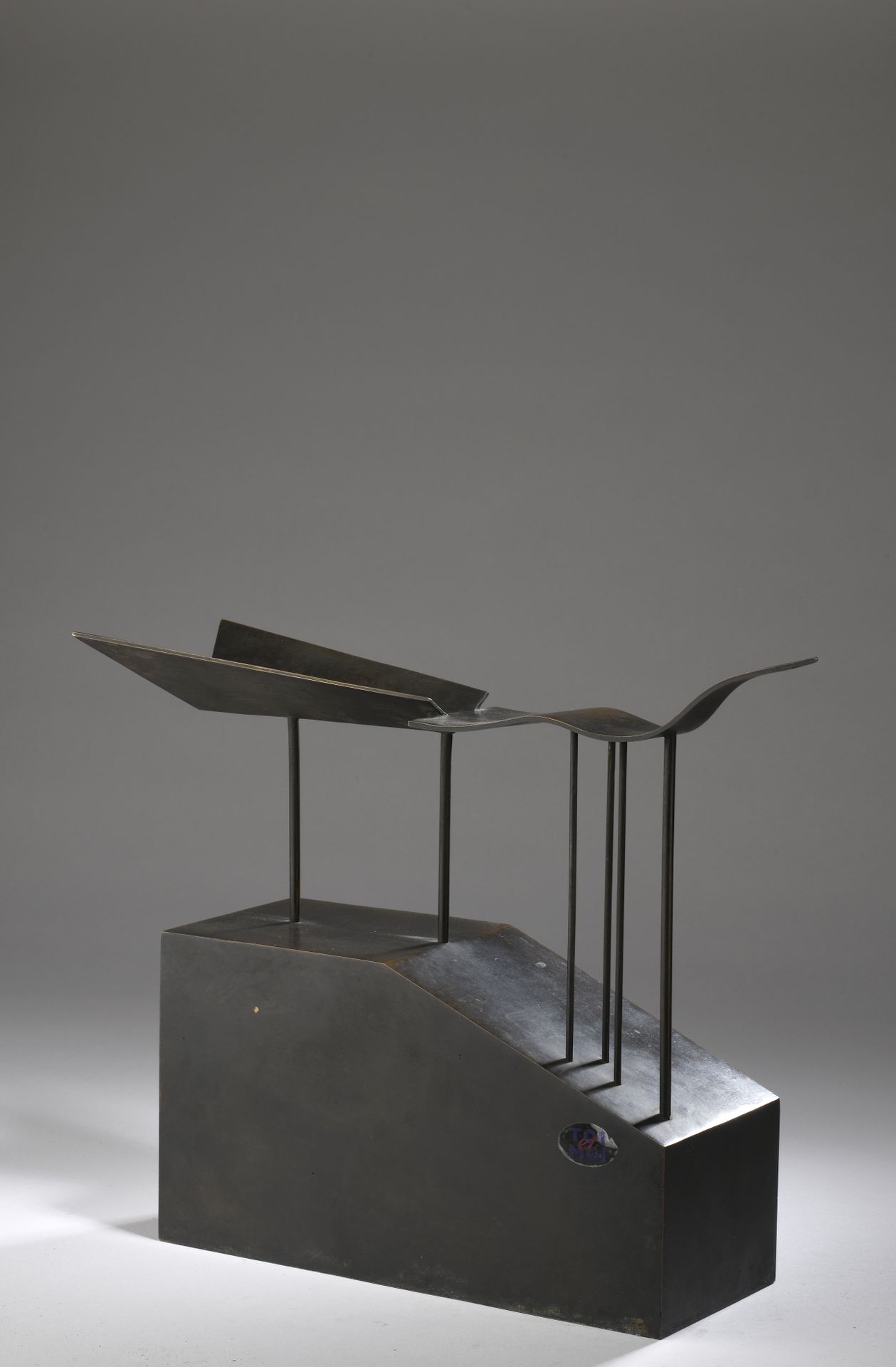Description
Alessandro Mendini, (1931-2019) Studio Alchimia arrow, circa 1983 Bronze with brown patina Unsigned 26.5 x 37 x 11 cm Bibliography - Pierangelo Caramia, Alessandro Mendini, Écrits d'Alessandro Mendini: architecture, design et projet, Dijon, Les Presses du Réel 2014. - Gianluca Riccio, Arianna Rosica, Alessandro Mendini: piccolo fantasie quotidiane, cat. exp., Naples, Museo Madre, October 29, 2020-February 1, 2021, Naple, Museo d'arte contemporanea Donnaregina, 2020. An architect who graduated from the Mila Polytechnic, Mendini established himself as one of the leading figures of the Radical Design movement in the 1970s. An indefatigable creator, the Italian designer multiplied his collaborations: with Studio Alchimia, with contemporaries such as Ettore Sottsass, Michele De Lucchi and Andrea Brazzi, and with Alessi and Swarowski. In 1973, he co-founded a design school called Global Tools and directed several architectural magazines and journals such as Casabella, Modo and Domus, all of which helped to spread his vision of architecture and design. For his work, Mendini was awarded the Compasso d'Oro prize in 1979 and 1981. Together with his brother Francesco Mendini, they designed several architectural ensembles, including the Groninger Museum in the Netherlands; Torre dell'orologio in Gibellina, Italy; Paradiso Tower in Hiroshima, Japan; the Ceramics Museum in Icheon, South Korea; and the Milan Triennale headquarters in Italy. A creator of objects, furniture, environments, installations and architecture, Mendini transforms everyday life by using new materials, drawing inspiration from the exaltation of the modern world advocated by the Futurist movement, and above all by adding color, as with Stepped Chair (1974-1975, Fauteuil de Proust (1978), Crisio (c.2000) and Giotto mode 3801 (2005). Breaking with classical codes, Mendini teamed up with the Milanese avant-garde group Studio Alchimia to create this still sober bronze Arrow, which oscillates between architectural model, design piece and poetic sculpture.
284
Alessandro Mendini, (1931-2019) Studio Alchimia arrow, circa 1983 Bronze with brown patina Unsigned 26.5 x 37 x 11 cm Bibliography - Pierangelo Caramia, Alessandro Mendini, Écrits d'Alessandro Mendini: architecture, design et projet, Dijon, Les Presses du Réel 2014. - Gianluca Riccio, Arianna Rosica, Alessandro Mendini: piccolo fantasie quotidiane, cat. exp., Naples, Museo Madre, October 29, 2020-February 1, 2021, Naple, Museo d'arte contemporanea Donnaregina, 2020. An architect who graduated from the Mila Polytechnic, Mendini established himself as one of the leading figures of the Radical Design movement in the 1970s. An indefatigable creator, the Italian designer multiplied his collaborations: with Studio Alchimia, with contemporaries such as Ettore Sottsass, Michele De Lucchi and Andrea Brazzi, and with Alessi and Swarowski. In 1973, he co-founded a design school called Global Tools and directed several architectural magazines and journals such as Casabella, Modo and Domus, all of which helped to spread his vision of architecture and design. For his work, Mendini was awarded the Compasso d'Oro prize in 1979 and 1981. Together with his brother Francesco Mendini, they designed several architectural ensembles, including the Groninger Museum in the Netherlands; Torre dell'orologio in Gibellina, Italy; Paradiso Tower in Hiroshima, Japan; the Ceramics Museum in Icheon, South Korea; and the Milan Triennale headquarters in Italy. A creator of objects, furniture, environments, installations and architecture, Mendini transforms everyday life by using new materials, drawing inspiration from the exaltation of the modern world advocated by the Futurist movement, and above all by adding color, as with Stepped Chair (1974-1975, Fauteuil de Proust (1978), Crisio (c.2000) and Giotto mode 3801 (2005). Breaking with classical codes, Mendini teamed up with the Milanese avant-garde group Studio Alchimia to create this still sober bronze Arrow, which oscillates between architectural model, design piece and poetic sculpture.
